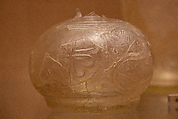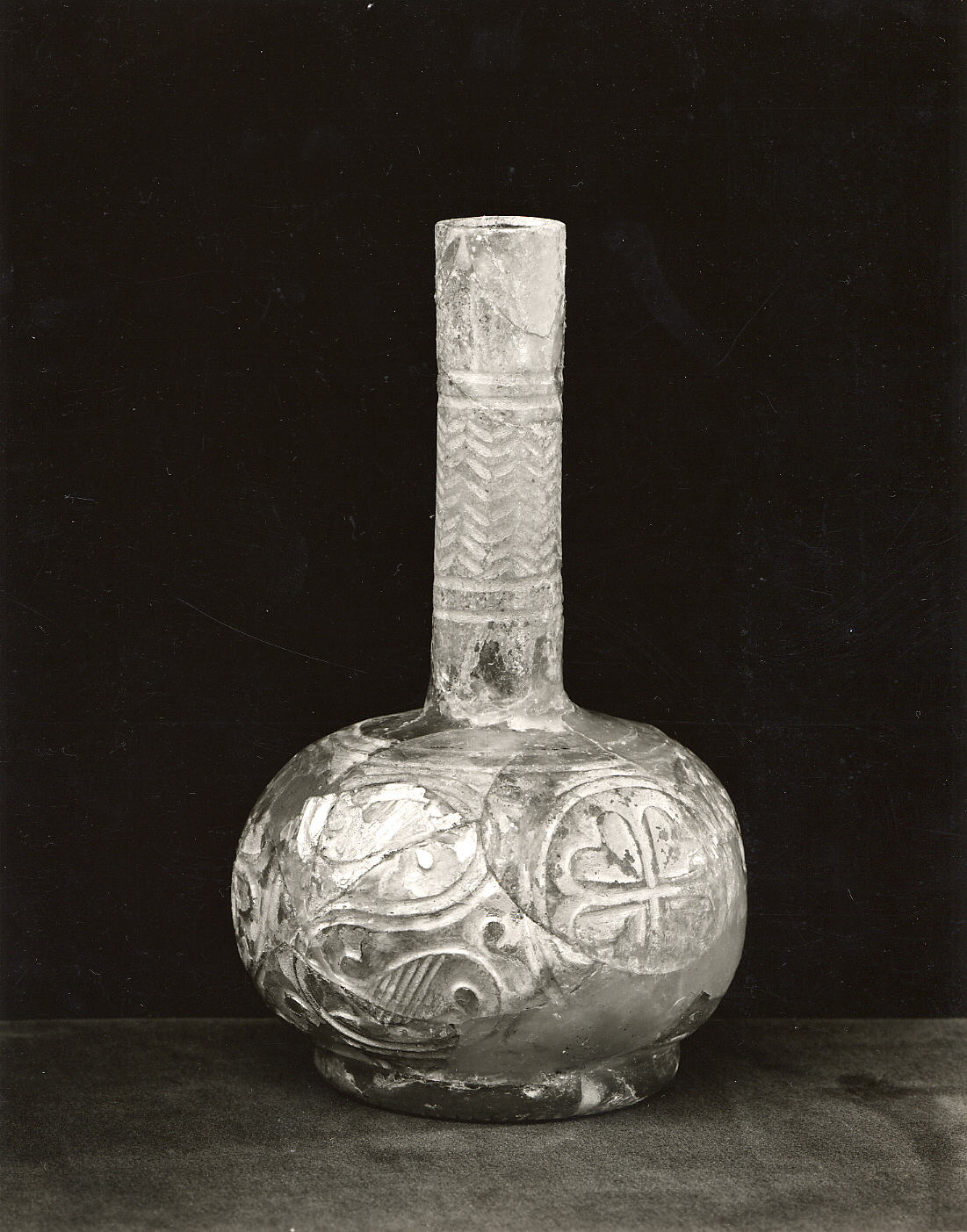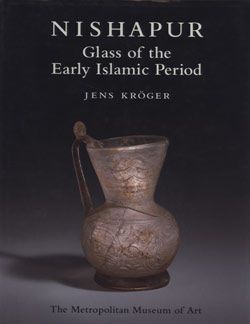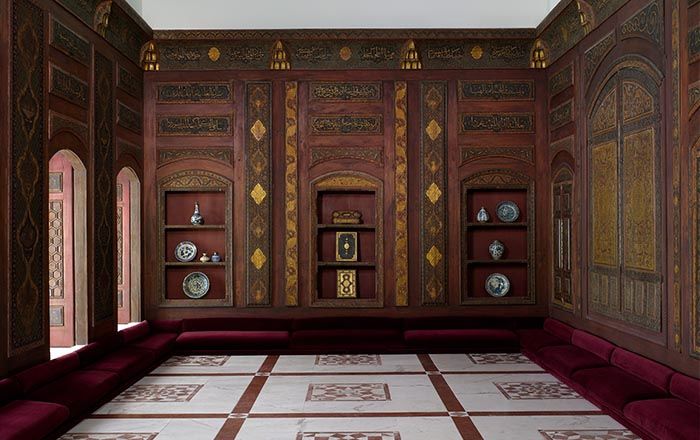Flask
Not on view
An example of "bevel-cut" glass, this piece is closer to relief cutting than other related examples. The negative space between the four hearts, the latter being a common device in Sasanian decorated bands, has been interpreted as an intentional Christian symbol. Whether or not it was so intended, other unquestionable examples of Christian crosses occur on Nishapur objects of the period.
This image cannot be enlarged, viewed at full screen, or downloaded.
This artwork is meant to be viewed from right to left. Scroll left to view more.




